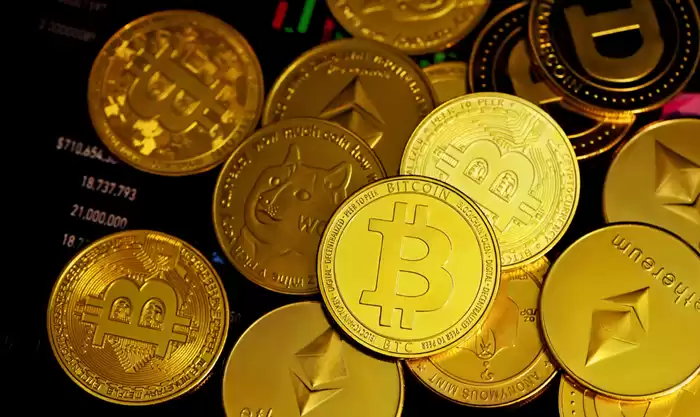-
 bitcoin
bitcoin $122090.672462 USD
1.59% -
 ethereum
ethereum $4493.758974 USD
0.56% -
 xrp
xrp $3.033145 USD
0.65% -
 tether
tether $1.000629 USD
0.00% -
 bnb
bnb $1169.854250 USD
7.07% -
 solana
solana $230.954786 USD
-0.19% -
 usd-coin
usd-coin $0.999785 USD
0.00% -
 dogecoin
dogecoin $0.256108 USD
-1.12% -
 tron
tron $0.342333 USD
-0.12% -
 cardano
cardano $0.859632 USD
-0.10% -
 hyperliquid
hyperliquid $48.932146 USD
-2.25% -
 chainlink
chainlink $22.345466 USD
-1.29% -
 ethena-usde
ethena-usde $1.000217 USD
-0.03% -
 avalanche
avalanche $31.203456 USD
1.93% -
 sui
sui $3.579145 USD
1.05%
How to profit from arbitrage trading strategies?
To capitalize on price disparities in the cryptocurrency market, arbitrage traders exploit market inefficiencies across exchanges, generating returns regardless of the underlying asset's price movement.
Nov 04, 2024 at 01:35 pm

In the ever-evolving landscape of the cryptocurrency market, arbitrage trading strategies emerge as a promising avenue to yield profits. Arbitrage, in its essence, involves the simultaneous buying and selling of the same asset across different exchanges or markets to capitalize on price discrepancies. By exploiting these market inefficiencies, traders can generate returns regardless of the direction of the underlying asset's price movement. This comprehensive guide delves into the intricacies of arbitrage trading, empowering traders with the knowledge and techniques to navigate the intricacies of this lucrative strategy.
Step 1: Identifying Market InefficienciesThe foundation of successful arbitrage trading lies in identifying inefficiencies or price disparities across various exchanges. This requires constant market monitoring and the ability to quickly spot deviations in prices. Some of the factors that can contribute to price differences include:
- Market depth: Limited liquidity in certain markets can lead to inflated prices, creating opportunities for traders with access to higher-liquidity markets.
- Trading fees: Exchanges may impose varying transaction fees, influencing the profitability of arbitrage trades.
- News and events: Sudden news or events can impact the demand and supply dynamics, creating short-term imbalances in prices.
Depending on the market inefficiencies identified, traders can select from various arbitrage trading strategies:
1. Triangular Arbitrage: This strategy involves trading three different cryptocurrencies across three different exchanges. By exploiting price discrepancies, traders can create a chain of buy-sell-buy transactions, securing a profit in the final step.
2. Spatial Arbitrage: This strategy capitalizes on price differences between exchanges in different geographical locations. By leveraging the time lag in price updates, traders can purchase an asset in one location and sell it in another where the price is higher, profiting from the spread.
3. Statistical Arbitrage: This more complex strategy employs quantitative models to identify and exploit statistical relationships between different cryptocurrencies. It utilizes historical data and advanced algorithms to predict and trade on price discrepancies.
Step 3: Risk Management and MitigationWhile arbitrage trading offers potential gains, it is not without its risks. Traders must implement robust risk management measures to protect their capital:
- Slippage: This occurs when an executed trade price deviates from the intended price due to market volatility or insufficient liquidity.
- Transaction fees: Fees incurred during trades can erode profitability, especially in low-margin arbitrage opportunities.
- Market volatility: Rapid price fluctuations can magnify potential losses, particularly in strategies that involve holding assets for an extended period.
The choice of exchanges is crucial for successful arbitrage trading:
- Reliability and liquidity: Select exchanges with high trading volumes and a proven track record of reliability to ensure the smooth execution of trades.
- Supported cryptocurrencies: Consider exchanges that support the specific cryptocurrencies involved in your arbitrage strategy.
- Transaction fees: Compare transaction fees among exchanges to minimize their impact on profitability.
Once the market inefficiency, strategy, and exchanges are selected, traders can execute their arbitrage trade:
- Order placement: Place buy and sell orders simultaneously across the selected exchanges to lock in the price differential.
- Trade execution: Monitor the orders closely and adjust them as necessary to ensure execution at favorable prices.
- Exiting the trade: Close the arbitrage position once the profit target is reached or the market conditions change.
Disclaimer:info@kdj.com
The information provided is not trading advice. kdj.com does not assume any responsibility for any investments made based on the information provided in this article. Cryptocurrencies are highly volatile and it is highly recommended that you invest with caution after thorough research!
If you believe that the content used on this website infringes your copyright, please contact us immediately (info@kdj.com) and we will delete it promptly.
- BlockDAG, DOGE, HYPE Sponsorship: Crypto Trends Shaping 2025
- 2025-10-01 00:25:13
- Deutsche Börse and Circle: A StableCoin Adoption Powerhouse in Europe
- 2025-10-01 00:25:13
- BlockDAG's Presale Buzz: Is It the Crypto to Watch in October 2025?
- 2025-10-01 00:30:13
- Bitcoin, Crypto, and IQ: When Genius Meets Digital Gold?
- 2025-10-01 00:30:13
- Stablecoins, American Innovation, and Wallet Tokens: The Next Frontier
- 2025-10-01 00:35:12
- NBU, Coins, and Crypto in Ukraine: A New Yorker's Take
- 2025-10-01 00:45:14
Related knowledge

Practical parameter settings for a Bitcoin multi-timeframe moving average system
Sep 18,2025 at 10:54pm
Optimizing Timeframe Combinations for Bitcoin Trading1. Selecting appropriate timeframes is crucial when building a multi-timeframe moving average sys...

How can I filter out false breakouts in Dogecoin high-frequency trading?
Sep 22,2025 at 01:00am
Understanding False Breakouts in Dogecoin Trading1. A false breakout occurs when Dogecoin's price appears to move beyond a defined support or resistan...

Techniques for identifying tops and bottoms in the Bitcoin on-chain NVT model
Sep 20,2025 at 07:54pm
Understanding the NVT Model in Bitcoin Analysis1. The Network Value to Transactions (NVT) ratio is often described as the 'P/E ratio' of the cryptocur...

What does the surge in open interest in Bitcoincoin futures mean?
Sep 20,2025 at 11:18pm
Understanding the Surge in Dogecoin Futures Open Interest1. A surge in open interest within Dogecoin futures indicates a growing number of active cont...

How can I use the Ethereum USDT premium to gauge market sentiment?
Sep 18,2025 at 11:55pm
Understanding the Ethereum USDT Premium1. The Ethereum USDT premium refers to the price difference between USDT (Tether) traded on Ethereum-based plat...

What should I do if Ethereum staking yields decline?
Sep 20,2025 at 06:18am
Understanding the Causes Behind Declining Ethereum Staking Yields1. The Ethereum network transitioned to a proof-of-stake consensus mechanism with the...

Practical parameter settings for a Bitcoin multi-timeframe moving average system
Sep 18,2025 at 10:54pm
Optimizing Timeframe Combinations for Bitcoin Trading1. Selecting appropriate timeframes is crucial when building a multi-timeframe moving average sys...

How can I filter out false breakouts in Dogecoin high-frequency trading?
Sep 22,2025 at 01:00am
Understanding False Breakouts in Dogecoin Trading1. A false breakout occurs when Dogecoin's price appears to move beyond a defined support or resistan...

Techniques for identifying tops and bottoms in the Bitcoin on-chain NVT model
Sep 20,2025 at 07:54pm
Understanding the NVT Model in Bitcoin Analysis1. The Network Value to Transactions (NVT) ratio is often described as the 'P/E ratio' of the cryptocur...

What does the surge in open interest in Bitcoincoin futures mean?
Sep 20,2025 at 11:18pm
Understanding the Surge in Dogecoin Futures Open Interest1. A surge in open interest within Dogecoin futures indicates a growing number of active cont...

How can I use the Ethereum USDT premium to gauge market sentiment?
Sep 18,2025 at 11:55pm
Understanding the Ethereum USDT Premium1. The Ethereum USDT premium refers to the price difference between USDT (Tether) traded on Ethereum-based plat...

What should I do if Ethereum staking yields decline?
Sep 20,2025 at 06:18am
Understanding the Causes Behind Declining Ethereum Staking Yields1. The Ethereum network transitioned to a proof-of-stake consensus mechanism with the...
See all articles










































































